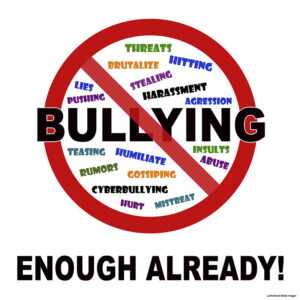
Bullying is a major problem in schools today. And it’s even worse for the LGBTQ community. Statistics show that LGBTQ youth are far more likely to be bullied than their heterosexual and cis peers. Here, btw takes a look at the extent of the problem as well as what can be done about it.
How Bad is the Problem?

According to the 2017 Youth Risk Behavior Survey, solidly one-third of LGBTQ youth has reported being bullied on school property, compared to only 17 percent of their heterosexual peers. In addition, 27 percent reported being cyberbullied in the past year, and 10 percent said they missed school because they were concerned for their safety. Numbers from the 2017 National School Climate Survey are even more frightening: more than half of LGBTQ youth report being verbally harassed and feeling generally unsafe in their schools. About a quarter report being physically bullied.
What is the impact of all of this? Aside from missed classroom instruction time, bullying can lead to depression, drug and alcohol abuse, poor grades, and suicidal thoughts. In fact, a recent study from the University of Minnesota found that nearly two-thirds of teens who identify as transgender have experienced suicidal thoughts.
What Can Be Done?
In general, the U.S. government suggests that the most important thing to do to combat these issues is to be supportive of LGBTQ youth to help them feel physically and emotionally safe. This means speaking out in their support, accepting them for exactly who they are (not asking them to change or hide their sexual identity), protecting their privacy, allowing them safe places to talk with trusted adults, creating a safe school environment, forming Gay-Straight Alliances (GSAs) at schools, and building interpersonal relationships between students by conducting social-emotional learning activities in schools.
Can We Make It Illegal?
In many places, it already is. In fact, in the past ten years, all fifty states have passed anti-bullying laws. But 21 states have gone even further, creating laws that make it illegal to bully on the basis of sexual orientation or gender identity.
One difficulty with these kinds of laws, however, is with identifying exactly what constitutes bullying. Traditionally, bullying has been defined as ongoing aggressive behavior over time. But researchers are beginning to realize that an aggressive behavior that happens just once or twice still counts as bullying. The federal government has defined two distinct bullying modes: direct and indirect. Direct bullying includes name-calling, threatening, or harassing someone (this applies to both in-person and online activities). Indirect bullying involves spreading rumors or gossip about someone behind their back with the intention of harming their reputation. Identifying the less-obvious “indirect” kind can be more challenging for lawmakers and school administrators.
Another problem with anti-bullying laws is that they are only as strong as their enforcement: in other words, if a school has an anti-bullying policy but a teacher or other school leaders looks the other way when it happens, the law has no power to it. The best anti-bullying laws require mandatory training for teachers on bullying, sexuality and gender identity, and identifying indirect bullying. Most experts agree that a problem this serious requires a commitment not just to writing laws protecting LGBTQ youth, but to enforcing those laws as well.
